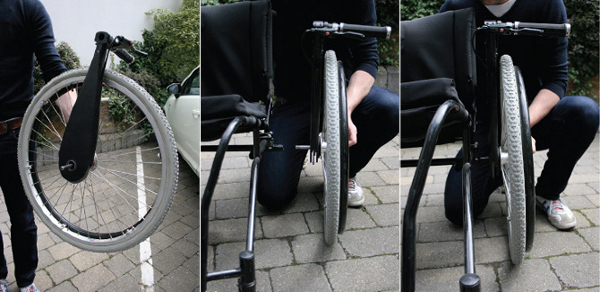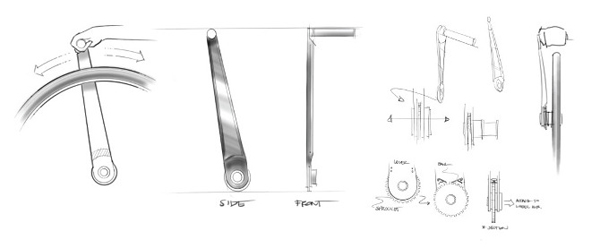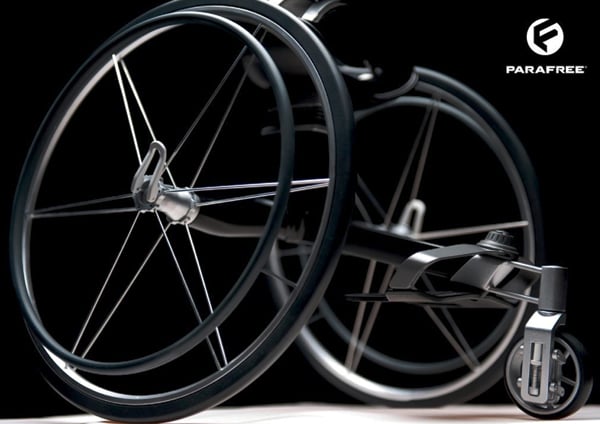Synergise is a thoughtful wheelchair add-on, retro-fittable on almost any existing model, that aims to help users navigate more effectively and efficiently. Akin to having bicycle brakes, the ratchet system allows wheelchair users to negotiate angled surfaces with reduced friction and increased efficiency over endurance with reduced risks of RSI (Repetitive Strain Injury) to the user.
The two-way ratchet mechanism is based on a wheel that has teeth cut out of it and a pawl that follows as the wheel turns. It can only go in one direction with the pawl in place, lifting one pawl and placing the other pawl on the other side makes the shaft go in the other direction. Cables linked to a shifter on the handlebar would lift the pawls. Each lever has independent control allowing the user to go forward, backward and rotate on the spot.
The brake is a rope dynamometer attached to the shaft with the main cog which is a frictional brake. A metallic strip is in a grooved spool and when you pull the brake lever, the cable pulls the strip and touches the spool creating friction and slowing down the wheelchair in a controlled manner. This is a useful tool to reduce stress going across cambered surfaces and cornering as well as braking.
Designer: Patrick Hyland







-
Yanko Design
Timeless Designs - Explore wonderful concepts from around the world!
Yanko Design Store - We are about more than just concepts. See what's hot at the YD Store!
(Retrofit Wheelchair Enhancement was originally posted on Yanko Design)
Related posts:

























